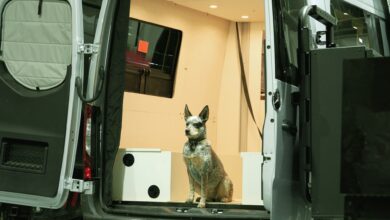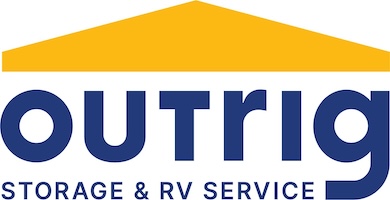Motivating Staff to Keep Things Tidy
Why maintaining a clean, neat showroom and parts store is essential to keeping customers shopping.

A new year calls for a fresh, new feeling in your store. Imagine spring cleaning – but in February.
The entire energy of your showroom and parts store changes when you move things around and clean at the same time. Customers are unconsciously aware of energy shifts and are more attracted to merchandise that has been moved to a new spot.
Years ago, I spoke at the Atlanta Gift Show on visual merchandising and mentioned how moving product creates sales. A woman in the audience raised her hand and said, “Every morning I walk into my store and move one thing, and every day that one thing sells!” I joked that the next day everyone would be walking into their stores and moving 15 things to see if it worked. It got a laugh, but I’ll always wonder if people tried it. I know I would!
I worked for a boutique years ago and when we put merchandise on a rolling rack to move to another location, that was the first thing customers would be drawn to. It became a joke – if something wasn’t selling, move it, and it’ll sell immediately.
Motivating Sales Staff
Does your sales staff move and clean the shelved products when they’re not with a customer? Or are they staring intently at their phones solving the world’s problems or checking out cat videos?
Rarely will a salesperson volunteer to clean, straighten and reset merchandise unless asked to, unless you have an amazingly motivated person working for you. If so, congratulations! If not, the beginning of the year is a great time to initiate new programs.
Consider holding a staff meeting and introduce the new program. Each person who works on the selling floor (and perhaps those who work behind the scenes, if they are not constantly busy) gets an area of the selling floor that they are responsible for. Ideally, these areas are as equal as possible in the quantity of products.
Their job is to make sure their area is clean, well-stocked, all labels are facing to the front, items are pulled to the front of the shelves, lines of merchandise are straight and the endcaps are fully stocked, neat and clean. If this is done in between customers, it really doesn’t take that long.
One person can be responsible for the showroom. Remove all shipping and/or empty boxes, make sure desks are neat (this is not going to be a popular part of the program), align brochures, straighten up anything that looks messy. If tables and chairs are misaligned, move them back into place. The showroom maintenance should not take long, and little changes can make a huge difference in customers’ eyes.
Introducing this new maintenance program could be challenging – and I’m being polite with my language. When introducing it, ask them to vote on whether they get one area that is “theirs” to maintain for as long as they are working or if they’d prefer to get a new area every two weeks, month or every other month. When given a choice, even of something they have no desire to do, the act of choosing helps people feel like they have some say in a new directive.
If you have never asked your staff to help with the merchandise maintenance, it may annoy them. But you have to start sometime, and keeping your store looking neat, clean and fresh will make your customers feel more comfortable shopping. The more they shop, the more people keep their jobs.
If you already have a person hired to take care of this daily, you’re all set. If not, chances are good that your store isn’t looking as fresh as it should.
If you are sure that your staff will rebel at the idea of cleaning and straightening up the merchandise, you may consider hiring a part-time merchandiser who can take care of each area on a rotating basis. Ideally, this person should come in at least three times a week.
Create Opportunities for Cross-Merchandising
Cross-merchandising is an excellent way to introduce new products to your customers. Once again, at a staff meeting, ask your salespeople how they create multiple sales. What products do they recommend their customers purchase together? If you have space in your aisles, or on an endcap, have each person who has offered a good suggestion create a cross-merchandising display. This could be mixing a group of products together that solve a specific problem. Develop a bundle of problem-solving products and consider offering them at a slightly discounted price when bought together.
To make this extra work more palatable to your staff, consider making it a competition. Track the sales of each cross-merchandised display and after a month, give a prize to the winner whose display sold the most. Prizes of value include time off, a better parking spot, money or something that is specific to that person.
A huge drugstore/gift shop in Sisters, Oregon, had this program in place. Each sales associate had their own area to maintain. The sales from each of their areas were tallied daily, and a winner was declared at the end of each month. The competition was friendly-fierce, and the entire store looked great as a result.
Over the years I have written visual standards guides for huge corporations as well as individually owned stores and small chains of stores. From American Express Travel Related Services, United Rentals, The BPAA (bowling), Singer, Saks Fifth Avenue and many other corporations to Alamar Uniforms (three stores), these guides have allowed management to train their staff to keep their standards high.
Maintenance is always covered first. It involves everything you see as you walk up to, in to, and through a store. While your staff isn’t going to replace lightbulbs on your outdoor sign, mop the floors or clean the façade and windows, they will notice if management doesn’t take care of what you own or manage. If you fail to hire people to take care of major things, you are exhibiting your lack of care for your facility. If you don’t care about how your store looks, why should they?
Maintenance starts with the top and influences everyone who works there. If you are proud of your place, you encourage others to feel that way as well.
This “pride of place” influences your customers. Your RVs are private homes. Your store should be as neat and clean as your customer’s homes – or perhaps more so. (The word “aspirational” comes to mind.) When people shop in an environment they respect, that creates equal respect for the products and expertise of the people working there.

Selling Floor Duties
For sales associates when not with a customer:
- Turn all labels to face the same direction
- Pull merchandise forward on shelves in a straight line
- Dust the tops of the products first, then the shelf
- Straighten crooked merchandise
- Make sure the space between products is even
- Check inventory daily for filling in and/or reordering
- Endcaps should be attractive, full and clean
- Make sure the correct item/price sign is aligned above or below the product
- Keep the area on/behind/around the checkout area clean and neat
- Remove broken or beat-up signage
- Keep desktops neat, desks aligned and chairs pushed in when not in use
For a maintenance worker:
- Bathrooms are cleaned daily
- Vacuum/sweep the floors daily
- Wash the floors once a week
- Dust any fake plants at least once a month
- Make sure all the light bulbs are working
- Clean the walk-off mats as needed
- Clean the windows (unless a separate company does that)


